If you want to surf comfortably in water temperatures below 23 °C, you should wear a wetsuit. The problem: the selection of wetsuits is almost as big as the waves at the surf spot.
This way you avoid annoying bad buys:
Find out what types of wetsuits there are, how to choose the right size and material thickness and what you should definitely look out for when buying.
What many surfers don’t know:
When choosing a wetsuit, the right finish plays just as important a role as the material thickness and size.
No time to read the entire guide?
This way you avoid annoying bad buys:- Wetsuit comparison
The 12 best wetsuits for men & women at a glance. - Wetsuit Bestseller
The most popular and best-selling wetsuits 2024. - Wetsuit Checklist
You should definitely pay attention to this when buying a wetsuit. - Wetsuit types, functions and processing
The surf suit types and technologies at a glance. - Which wetsuit thickness is the right one?
How to choose the right wetsuit thickness according to climate and region. - Which wetsuit size is the right one?
How to recognize the perfect fit (incl. infographic). - Neoprene care and cleaning
This guarantees a long service life and durability. - FAQ: Wetsuit knowledge
Frequently asked questions and answers about wetsuits.
Wetsuit comparison
The most popular wetsuits at a glance
To make your selection even easier, we have compared the most popular men’s and women’s models for shorties and steamer wetsuits*.
Avoid buying mistakes and have all the advantages and disadvantages directly reviewed!
(*Are you unsure what the difference is between shorties and steamers? Then read our ” detailed wetsuit buying guide first.)
Wetsuits for women
Wetsuits for men
Springsuits & shorties for women
Best neoprene shorty with long sleeves
1. Roxy Prologue 2/2
Advantages
- 2 mm neoprene
- Stretchable material
- Flatlock seams
- Adjustable Hydrowarp neck closure system
- Reinforcement in the chest area
- Long sleeves
Disadvantages
- Not suitable for cold water
Summary
This short wetsuit keeps you warm in summer when the wind and waves are blowing. The stretchy material ensures freedom of movement so that paddling in this wetsuit is not a torture.
Flatlock seams make the wetsuit construction robust and durable. Thanks to the adjustable Hydrowarp neck closure system, little water gets inside the suit at the collar.
Long sleeves and the reinforcement in the chest area improve the comfort of the wetsuit.
Conclusion
Long-sleeved neoprene shorty for the summer.
Product details
Style: Shorty | Material: 83 % nylon, 17 % elastane | Neoprene thickness: 2 mm | Lining & reinforcements: Reinforcement in the chest area | Seams: Flatlock | Zip: Backzip
Customer ratings
FAQ
Best high quality wetsuit
2. rip curl GBOMB GB
Advantages
- Quick-drying material
- Flexible
- 1 mm thick neoprene
- High-quality workmanship
- Bonded and sealed blindstitch seams
Disadvantages
- Thin
Summary
This shorty is ideal for warm waters, especially on days when it’s too cold in a bikini or bathing suit. The neoprene is only 1 mm thick, which ensures a high degree of freedom of movement.
The individual parts of the wetsuit are connected with glued and sealed blindstitch seams, which makes the wetsuit very robust. However, if you get cold quickly in summer, you should look for a thicker shorty.
Conclusion
Lightweight shorty for warm waters.
Product details
Style: Shorty | Material: 80 % neoprene, 20 % polyamide | Neoprene thickness: 1 mm | Lining & reinforcements: none | Seams: Glued and sealed blindstitch seams | Zip: Backzip
Customer ratings
FAQ
Best retro wetsuit
3. billabong captain shorty
Advantages
- Retro design
- Ideal for warm regions
- Flatlock seams
- 1 mm thick neoprene
Disadvantages
- Front zip
Summary
These chic retro shorts are ideal for surf sessions in warm regions. The neoprene is only 1 mm thick, giving the wearer the greatest possible freedom of movement.
Flatlock seams make the wetsuit robust and durable. The front zip is not really a disadvantage, but some people find it annoying.
Product details
Style: Shorty | Material: 100 % neoprene | Neoprene thickness: 1 mm | Lining & reinforcements: none | Seams: flatlock stitch construction | Zip: front zipper
Customer ratings
Customers are completely convinced by this wetsuit.
FAQ
Steamer for ladies
Best wetsuit for low temperatures
1. Rip Curl Flashbomb GB
Advantages
- Warming inner lining
- High-quality workmanship
- Flexible neoprene
- Glued and blind stitched seams
- Hydro Loc collar
- 4/3 mm neoprene
- Chest Zip
- Magnetic key pouch
Disadvantages
- Price
Summary
Long session at low temperatures? No problem with the Rip Curl Flashbomb GB. The 4/3 mm thick neoprene in combination with the warming inner lining keeps you warm and comfortable for a long time.
The E5 neoprene is super stretchy and hardly restricts you when paddling. The Hydro Loc collar fits snugly around the neck so that hardly any water gets inside. The Chest Zip, which closes the wetsuit, fulfills the same function. Glued + blind stitched seams make the wetsuit robust and do not let water in.
Many surfers want to take their keys with them on the water, which is why the wetsuit has a magnetic key pocket. This wetsuit is designed for people who spend a lot of time in the water and therefore costs a little more.
Conclusion
High performance wetsuit for cold water.
Product details
Style: Steamer | Material: 80 % neoprene, 20 % polyamide | Neoprene thickness: 4/3 mm | Lining & reinforcements: Stress point taping | Seams: Glued and blind stitched seams | Zip: Chest zip
Customer ratings
FAQ
Best wetsuit for beginners
2. O’Neill Reactor
Advantages
- Inexpensive
- Beginner wetsuit
- Flatlock seams
- Mesh inserts on the chest and back
- 3/2 mm neoprene
- Flexible neoprene
Disadvantages
- Not suitable for cold water
- Backzip
Summary
The Reactor is a great entry-level wetsuit that keeps you warm for a long time in medium water temperatures. The flatlock seams have a high-quality finish so that this wetsuit will last you a long time.
Flexible neoprene provides the necessary freedom of movement when paddling. Mesh inserts on the chest and back ensure comfort and reduce the pressure of the board on the chest.
The neoprene is 3 or 2 mm thick, so the Reactor is not suitable for very low temperatures. Although the backzip is not a major disadvantage, wetsuits with a chestzip are easier to close.
Conclusion
Great entry-level wetsuit with a good price-performance ratio.
Product details
Style: Steamer | Material: 70 % Fluid Foam, 30 % Fluid Flex | Neoprene thickness: 3/2 mm | Lining & reinforcements: N/A | Seams: Flatlock | Zip: Backzip
Customer ratings
Customers praise the good price-performance ratio and the fit of the wetsuit. They are also impressed by the workmanship of the product.
Around 11% are neutral about the product, while 5% rate the product as poor and inadequate.
Some customers have had problems with this wetsuit with torn seams or are of the opinion that the zipper on the back does not hold well.
FAQ
Best neoprene suit for low temperatures
3. ION BS Element Semidry 5/4
Advantages
- Ideal for low temperatures or people sensitive to the cold
- Good price-performance ratio
- Thermal lining
- Stretchable material
- Knee pads
Disadvantages
- Possibly too warm in summer
Summary
Anyone who goes into the water at very low temperatures or is a real frostbite will feel comfortable in this wetsuit. 5 or 4 mm thick neoprene keeps you warm for a long time, even in cold water. In warmer regions, however, you will quickly work up a sweat with this semi-dry wetsuit.
In terms of price-performance ratio, this wetsuit is convincing. The thermal lining is pleasant to the touch and keeps you ideally warm. The material is stretchy and allows the wearer the necessary freedom of movement.
Conclusion
5/4 wetsuit for very cold days with a good price-performance ratio.
Product details
Style: Steamer | Material: 85 % neoprene, 15 % nylon | Neoprene thickness: 5/4 mm | Lining & reinforcements: Knee pads, Hot-Stuff 2.0 thermal lining, Silk-Stuff lining | Seams: N/A | Zip: Backzip
Customer ratings
FAQ
Jumpsuits & shorties for men
Best flexible wetsuit
1. Rip Curl Omega 1.5 mm
Advantages
- Flexible material
- Dries quickly
- High-quality workmanship
Disadvantages
- Not for cold water
Summary
The E5 and E3 neoprene used makes this wetsuit particularly light, flexible and robust. The materials are of high quality and make the suit comfortable to wear.
Conclusion
High-quality neoprene shorty.
Product details
Style: Shorty | Material: E5 and E3 neoprene | Neoprene thickness: 1.5 mm | Lining & reinforcements: none | Seams: N/A | Zip: Backzip
Customer ratings
Customers are completely convinced by this wetsuit.
FAQ
Best wetsuit for cool summer days
2. O’Neill Reactor Spring Wetsuit
Advantages
- Flexible material
- Flatlock seams
- Adjustable neck cuff
- Seamless shoulder, chest and arm panels
- 2 mm neoprene
Disadvantages
- Seams are not specially sealed
Summary
The Reactor is ideal for surfing on cool summer days, as the neoprene is 2 mm thick. The flexible material ensures a high degree of freedom of movement. A wetsuit must not be restrictive when paddling, which is why the shoulder, arm and chest panels are completely seamless.
The cuff at the neck can be adjusted, guaranteeing a perfect fit. However, the flatlock seams are not specially sealed so that water can penetrate.
Conclusion
2 mm shorty for cool summer days.
Product details
Style: Shorty | Material: N/A | Neoprene thickness: 2 mm | Lining & reinforcements: none | Seams: Flatlock | Zip: Backzip
Customer ratings
Customers state that the wetsuit keeps them warm in the water. It is also comfortable to wear and does not restrict the wearer’s movements.
Around 5% are neutral about the product, while 3% rate the product as poor and inadequate.
Some customers find the smell of the wetsuit unpleasant.
FAQ
Best wetsuit for summer sessions
3. Billabong Intruder SS
Advantages
- Comfortable to wear
- Flexible
- 2 mm neoprene
- Flatlock seams
Disadvantages
- Seams not sealed
Summary
This wetsuit is made of 2 mm thick neoprene and is perfect for summer surf sessions. The material used is flexible and the individual parts are joined together with flatlock seams.
The seams are not additionally sealed and therefore not optimally waterproof. However, this is not a problem in summer temperatures.
Conclusion
2 mm wetsuit with flatlock construction.
Product details
Style: Shorty | Material: 80 % polchloroprene, 20 % polyamide | Neoprene thickness: 2 mm | Lining & reinforcements: Mesh insert chest and back | Seams: Flatlock | Zip: Backzip
Customer ratings
Customers praise the fit and workmanship of this wetsuit.
Around 4% are neutral about the product, while 0% rate the product as inadequate and insufficient.
FAQ
Steamer for men
Best durable steamer for men
1. Quiksilver Marathon Sessions
Advantages
- Warm 3D lining
- Waterproof GBS seams
- Durable neoprene
- Chest Zip
- Quiksilver Eco Materials
- Simple design
- Key holder
Disadvantages
- Not for very low temperatures
Summary
The ideal wetsuit for long sessions at low temperatures. The neoprene of the wetsuit is 4 mm thick, with a thickness of 3 mm at the extremities. The warm 3D lining on the inside ensures comfort and warmth.
The seams are taped on the inside and sealed on the outside with the Liquide Flex Seal. This makes the seams waterproof so that no water can penetrate the wetsuit. The chest zip ensures comfort and makes it easier to put on and take off the steamer.
With a simple design in black, the wetsuit also cuts a good figure visually. Quiksilver uses neoprene made from limestone instead of petroleum in the production process, thus conserving resources and making production more environmentally friendly.
Conclusion
Simple wetsuit that keeps you warm at low temperatures.
Product details
Style: Steamer | Material: 83 % nylon, 17 % elastane | Neoprene thickness: 4/3 mm | Lining & reinforcements: Thermo-smooth panels, knee pads | Seams: Taped GBS seams inside, Liequid Flex Seal outside | Zip: Chest zip
Customer ratings
FAQ
Best lightweight steamer
2. Rip Curl E-Bomb
Advantages
- No zipper
- Lightweight and flexible
- Thermo lining
- Glued seams + tape
- Quick-drying
- Knee pads
Disadvantages
- No zipper
- Difficult to put on
Summary
This wetsuit from Rip Curl works without a zipper. The lightweight and flexible material hardly restricts the wearer’s movements. The suit’s E6 neoprene also dries quickly.
The 4 mm and 3 mm thick neoprene keeps the body warm. Taped seams, which are taped from the inside, ensure that hardly any water penetrates. With normal wetsuits, the zipper is a weak point through which water can get inside. If water does get into the suit, it can drain away through the suit’s drainage system. Knee pads ensure comfort.
However, not all surfers are convinced by wetsuits without a zipper; some prefer the classic wetsuit with a zipper.
Conclusion
Quick-drying wetsuit, without zipper.
Product details
Style: Steamer | Material: 80 % neoprene, 20 % polyamide | Neoprene thickness: 4/3 mm | Lining & reinforcements: Knee pads, thermal lining, thermolining | Seams: Glued + taped seams | Zip: Zipless
Customer ratings
FAQ
Best wetsuit for beginners
3. O’Neill Reactor
Advantages
- Inexpensive
- Beginner wetsuit
- Flatlock seams
- Seamless shoulder, chest and arm panels
- Flexible neoprene
Disadvantages
- Not suitable for cold water
Summary
If you are looking for an entry-level wetsuit, we recommend the O’Neill Reactor. The Reactor costs around 100 $, making it particularly attractive for surfing novices.
The parts of the wetsuit are held together with flatlock seams. These are robust, but less waterproof than glued and taped seams. For this reason, and because the neoprene is only 3 or 2 mm thick, the suit is not suitable for surfing in cold water.
Thanks to the seamless shoulder, chest and arm panels, surfers have plenty of freedom of movement in this wetsuit. The material itself is also relatively flexible.
Conclusion
Inexpensive wetsuit for warm water and surf beginners.
Product details
Style: Steamer | Material: 83 % polyamide and 17 % elastane | Neoprene thickness: 3/2 mm | Lining & reinforcements: Knee pads | Seams: Flatlock | Zip: Backzip
Customer ratings
Customers particularly praise the price-performance ratio and the fit of the suit.
Around 4% are neutral about the product, while 2% rate the product as poor and inadequate.
Some customers were not satisfied with the workmanship of the wetsuit.
FAQ
Bestsellers: The most popular wetsuits?
(**Last update 2024-11-21)
Wetsuit purchase Checklist
Avoid buying mistakes
To find the perfect wetsuit for your needs, first ask yourself the following questions:
- What is the temperature of the water?
- What is the weather like (windy, sunny, cloudy…)?
- How sensitive are you to the cold?
- How long do you want to stay in the water?
- How is your body built?
- Which performance factors are particularly important to you (e.g. high flexibility, fast drying)?
- What role do style and color selection play for you?
- How important is sustainability to you?
- How much money do you want to spend?
Have the questions been answered? Then the following explanations will help you to choose the right wetsuit type, size and thickness:
Wetsuit types, technologies and features
Wetsuits keep you warm in the water and protect your skin from abrasions and excessive UV radiation.
The interesting thing about it:
(adsbygoogle = window.adsbygoogle || []).push({});
Wetsuits are designed to create a thin film of water between the skin and the suit, which heats up above body temperature – hence the name.
Most surf suits are black. Why? The absorption of sunlight increases the warming effect of the wetsuit.
Wetsuits are(still) made from the “miracle rubber” neoprene. Thanks to trapped air bubbles, the synthetic rubber has a high warming effect and provides buoyancy.
At the same time, neoprene is very stretchy and hard-wearing – ideal for the demands of surfing.
What types of wetsuits are there?
Depending on the surfing conditions, region and water temperature, 3 different types of wetsuits are available :
- Lycra and rash guards,
- Spring wetsuits (short wetsuits, also known as shorties),
- Fullsuits (also known as steamers).
Whether the surf suit is intended for women, men, boys or girls is irrelevant in this distinction. For babies alone, there is a smaller selection of surf suit types – but they probably don’t have too many requirements yet…
1) Lycra and rash guards

Lycra, rashguards and surf tees are used especially in really warm water temperatures above 20 degrees and are primarily intended to protect against UV radiation.
It also prevents unpleasant abrasions on the upper body, which can otherwise quickly occur due to skin friction on the surfboard.
The advantage over classic wetsuits: They are quick to put on and take off and are usually made of lightweight, very quick-drying materials.
2) Springsuits and shorties

Springsuits and shorties are usually between 0.5 and 3 millimeters thick. Shorties have short legs and arms, whereby the type of collar and the exact arm and leg length vary.
Springsuits often have long arms and short legs, but there are also a variety of models and styles.
The advantage over lycra and rashguards is that they keep your core warm and don’t slip, even in the heaviest wash. Also suitable as a snorkeling suit.
3) Steamer

Classic wetsuits with long legs and arms usually have a thickness of 2 to 6 millimeters. Steamers differ in particular in the finish of the seams, the position of the zipper, the neoprene thickness and the lining.
Why is this important? Depending on their design, the wetsuits have different levels of warmth and wind resistance.
There are even models with an integrated hood for particularly cold water, and sleeveless or short-sleeved models (also known as long john or long jane) for warmer regions.
Discover below what you should definitely pay attention to when processing zippers, seams and linings.
Zip – It’s the zipper that counts
(adsbygoogle = window.adsbygoogle || []).push({});
An important feature of wetsuits is the zipper.
Skin-tight wetsuits are easier to put on and take off.
The most important thing comes now:
The longer the zip, the easier it is to put on and take off.
The disadvantage of zippers:
There is a higher chance of water entering and makes the wetsuit less flexible.
There are 4 different types of zipper systems:
1) Front zip

As the name suggests, the zipper on the front zip is at the front. Springsuits, where the warming effect is in the background, often have this type of zipper.
The advantage over back zips is that less water penetrates the suit. This type of surf suit is very easy to put on.
2) Back zip

With the Back Zip, the wetsuit is closed at the back. This is usually done using a long strap so that you can open and close the suit on your own.
The advantage over front zips: The zipper does not press against your body when you lie flat on the board. Also easy to put on.
3) Chest Zip

With the Chest Zip, the zipper runs horizontally or slightly diagonally across the chest. Slipping into them requires some practice.
The big advantage: much less water gets in than with a front or back zip. This means the wetsuit warms better and is also more flexible, as the shoulders and back are covered throughout. What’s more, you don’t have any tape flying around on your suit.
4) No Zip/Zip free/Zipperless

Special wetsuits without zippers are available for surfers who place particular emphasis on performance and often stay in the water for long periods of time. But they are a little more difficult to put on.
The advantage of Zipfree wetsuits: Maximum comfort with minimum water ingress and maximum flexibility!
Seams – the quality is in the details
The workmanship of the seams plays an important role in the water permeability and warmth of the surf suits. Thanks to the latest stitching techniques, seams are becoming increasingly durable and flexible.
There are 4 different types of processing for wetsuits:
- Flatlock: overlapping stitch, particularly flexible and strong, permeable to water and air for a pleasant climate in warmer temperatures
- Taped: flexible tapes on the inside of the seam, increased durability, less water ingress and a pleasant feel
- Glued & Blindstitched (GBS): Neoprene is glued and then sewn from one side with a blindstitch, often sewn several times and/or additionally taped, very water-repellent seam
- Sealed: seam sealed with liquid sealant for maximum water resistance, especially for use with winter wetsuits
This is how you recognize quality:
To ensure maximum flexibility and comfort, high-performance wetsuits try to use as few seams as possible.
Neoprene suits such as the G & E-Bomb series from Rip Curl therefore avoid seams around the shoulders and arms, as maximum freedom of movement is required here.
Lining and reinforcements
The material on the knee wears out more quickly, especially for beginners. Knee pads are therefore absolutely standard. Reinforced knee sections are useful to both reinforce the material and protect the skin from abrasions.
It gets even better:
For better heat retention, many wetsuits are also partially or fully equipped with a thermal lining. In addition to a positive warming effect, these linings are generally water-repellent, quick-drying and stretchy.
Neoprene thickness
How thick should the surf suit be?

The thickness of a wetsuit is given in millimeters. In most surf suits, the material is slightly thicker in the torso area for better thermal performance. In contrast, the neo is slightly thinner on the legs and arms for optimum freedom of movement.
What does it mean when the material thickness is indicated as “4/3” on a wetsuit?
For a “4/3” or “4/3 Steamer”, for example, 4mm thick neoprene is sewn to the torso and 3mm thick neoprene to the limbs.
The right thickness for each surfing opportunity is determined by the water temperature, your physique or your personal sensitivity to cold, but also by the weather.
What many people don’t know:
- Water cools the body up to 40 times faster than air!
- Wind also cools you down, while the sun warms you up.
If you are not sure what thickness you need for your first wetsuit, you can borrow a suit to test it out.
Please note: rental suits often fit poorly or already have a hole or two. This already limits their heating effect.
A new, well-fitting surf suit will keep you much warmer than a baggy wetsuit from surf school, even with the same thickness of material!
Wetsuit thickness according to climate and temperature
As a rule of thumb, the colder the water, the thicker the neoprene should be.
The sensation of temperature varies from person to person. The chart and the following table therefore only provide an initial indication and the areas overlap.
| Water temperature | Thickness | Recommended wetsuit | Shoes | Gloves | Hood |
|---|---|---|---|---|---|
| below 9°C | 6/5mm | Steamer, dry suit | |||
| 10°C – 15°C | 5/4mm 4/3mm | Steamer | (optional) | ||
| 13°C – 18°C | 4/3mm 3/2mm | Steamer | (optional) | ||
| 15°C – 20°C | 3/2mm | Steamer or springsuit | |||
| 17°C – 20°C | 3/2mm 2/2mm | Shorty, springsuit, Steamer | |||
| 19°C – 22°C | 2/2mm | Shorty | |||
| from 22°C | – | Board shorts, bikini, Rash Guard |
Imagine you have offshore wind, perfect waves and an empty line-up – this is the surf session of your life! There’s nothing worse than having to get out of the water after just one hour of surfing because you can hardly move due to the cold. What do we learn from this?
Even if you think you’re a tough cookie, choose a wetsuit that’s a step thicker if in doubt!
Wetsuit thickness by region
The requirements for a wetsuit also vary depending on the climate zone and surfing region.
| Region | Spring | Summer | Autumn | Winter |
|---|---|---|---|---|
| Northern to Central Europe (Denmark, Germany, England, Ireland, Netherlands) | 4/3 or 5/4 steamer | 3/2 or 4/3 steamer | 4/3 or 5/4 steamer | 6/5 Steamer |
| Central to Southern Europe (France, northern Spain, northern and central Portugal) | 4/3 or 3/2 steamer | 3/2 steamer or shorty | 3/2 or 4/3 steamer | 4/3 or 5/4 steamer |
| Southern Europe & North Africa (Southern Spain/Andalusia, Algarve, Morocco, Canary Islands) | 3/2 steamer or shorty on warm days | Shorty or bikini or board shorts | 3/2 steamer or shorty | 3/2 or 4/3 steamer |
Our recommendation:
On calm, sunny days in summer, it may be too warm for you. Then simply let some water in or, if necessary, pack a 3/2, shorty or springsuit.
Cold-water junkies get their money’s worth in Scandinavia, Ireland and the Baltic States. It is advisable – at least in winter – to add surf shoes, gloves and a neoprene hood to your wetsuit.
Wetsuit size
How to find the perfect fit
What is the best fit for your wetsuit? The motto is:
Sits, fits, doesn’t wobble and has no air!
Wetsuit sizes correspond approximately to your normal clothing size. The problem is that the differences between the individual manufacturers are sometimes quite large.
Be sure to test several wetsuit sizes. This is the only way to find out which make and size best suits your body shape!
How do you know if the wetsuit fits you?
In a surf store or wetsuit outlet, specialist staff can provide you with professional advice on wetsuit testing. If you don’t have a store near you, you can also order a selection of wetsuits online and try them on at home.
If you can answer yes to the following 5 questions, you have found the perfect fit:
1. Does the suit fit snugly, including at the neck, arm and leg cuffs?
A wetsuit must fit like a second skin. If it is too wide, too much water gets in. Paddling becomes more difficult and you cool down more quickly. The fabric can also cause unpleasant friction in areas that are too loose.
2. Can you still breathe well despite the tight fit?
That would be pretty useful if you need to catch your breath quickly between 2 set waves…
3. Do you have enough freedom of movement in the wetsuit?
Carefully try out whether the suit offers you enough flexibility for prone positions, paddling, pop-ups and turns. By the way: the neo expands a little more in the water!
4. Does the suit crease under the arms?
This should be as little as possible with sufficient freedom of movement for the shoulders and arms. Otherwise this can quickly lead to sore spots, which can make paddling up the waves a real ordeal. If the crease disappears as soon as you raise your arms sideways to chest height, that’s fine.
5. Does the wetsuit crease at the back of the knees or on the shoulders?
Then it’s not the right one. If it already wrinkles when dry, it will quickly become really slobbery in the water.
Size charts of the best-known surf brands:
- Billabong size chart
- O’Neill size chart
- Rip Curl size chart
- Roxy size chart
- Quicksilver size chart
- Xcel size chart
- Patagonia size chart(men)(women)
Note: Size charts only give an initial indication of whether the suit will fit you in the end. It is therefore better to test 2-3 sizes before finally deciding on a model.
Neoprene care and cleaning
- "'hält wirklich Ihren Neoprenanzug und andere Neopren-basierte Ausrüstung frisch, elastisch und vor allem in gutem...
- 250 ml
- Super Stretch Conditioner Neopren Biologisch abbaubar, so dass es nicht schadet der Umwelt! Ihre Neopren, Handschuhe,...
If you want to clean your wetsuit gently and in an environmentally friendly way, it is best to use Rip Curl’s “Piss Off” detergent. The advantages:
- disinfecting effect,
- is biodegradable,
- prevents unpleasant odors,
- No impairment of the elasticity and flexibility of the neoprene.
After cleaning, gently squeeze out the Neo (do not wring it out!).
You can roll it carefully for storage and transportation (avoid hard kinks!) – or you can wrap it around your surfboard in your board bag.
How to care for your wetsuit properly:
- Carefully remove the wetsuit without pulling too hard on the neoprene.
- Rinse it out with plenty of fresh water after every surf session. Salt water dries more slowly and can leave behind unpleasant odors.
- If the wetsuit starts to smell, soak it in lukewarm water and special neoprene detergent. Then rinse it properly again.
- Turn your wetsuit inside out to dry and hang it up by your waist. Caution: Never hang by the shoulders, as this will lead to unwanted deformation!
- Find a place to dry in the shade or in a well-ventilated room. Avoid prolonged UV exposure at all costs.
Note: Cracks and small holes should be repaired immediately to prevent them from getting worse.
Small holes can be repaired with e.g. Shoe-Goo. Larger breakages should be repaired by a professional.
FAQ: Wetsuit knowledge
Frequently asked questions and answers ?!
Discover frequently asked questions below. The answers may surprise you:
- How does a wetsuit work?
- What types of wetsuits are there?
- What size wetsuit?
- What thickness for a wetsuit?
- How do you clean a wetsuit?
- Can a wetsuit be washed?
- What do I wear under a wetsuit?
- How do I put on a wetsuit correctly?
- How much does a wetsuit cost?
- Is neoprene waterproof?
- Are there environmentally friendly wetsuit alternatives to neoprene?
How does a wetsuit work?
What types of wetsuits are there?
- Lycra and rash guards,
- Spring wetsuits (short wetsuits, also known as shorties),
- Fullsuits (also known as steamers).
Whether the surf suit is intended for women, men, boys or girls is irrelevant in this distinction. You can find out more details about the individual technologies ” here.
What size wetsuit?
- Does the suit fit snugly, including at the neck, arm and leg cuffs?
- Can you still breathe well despite the tight fit?
- Do you have enough freedom of movement in the wetsuit?
- Does the suit crease under the arms?
- Does the wetsuit crease at the back of the knees or on the shoulders?
If you can answer all the questions with yes, the wetsuit fits perfectly!
What thickness for a wetsuit?
| Water temperature | Thickness | Recommended wetsuit |
|---|---|---|
| below 9°C | 6/5mm | Steamer, dry suit |
| 10°C – 15°C | 5/4mm 4/3mm | Steamer |
| 13°C – 18°C | 4/3mm 3/2mm | Steamer |
| 15°C – 20°C | 3/2mm | Steamer or springsuit |
| 17°C – 20°C | 3/2mm 2/2mm | Shorty, springsuit, Steamer |
| 19°C – 22°C | 2/2mm | Shorty |
| from 22°C | – | Board shorts, bikini, Rash Guard |
As a rule of thumb: the colder the water and weather, the thicker the neoprene should be.
How do you clean a wetsuit?
Can a wetsuit be washed?
What do I wear under a wetsuit?
Men usually wear nothing underneath. Women sometimes find the additional support of a sports bra or surf bikini comfortable. Some simply feel more comfortable when they are not completely naked under their wetsuit.
Good to know: ” Click here for our surf bikini comparison.
If you have your own well-fitting wetsuit, there is usually no need to wear swimming trunks, a bikini or bathing suit underneath. A surf poncho, for example, helps prevent unwanted glimpses when changing clothes.
How do I put on a wetsuit correctly?
Anyone who has ever worn a wetsuit knows this:
The eternal struggle with the wetsuit until it fits properly and no longer pinches or clings. If you use too much force when putting them on, the openings for the legs and arms may tear. Annoying!
But there is another way:
- Put the plastic bag over one foot and slip into the first leg. Then slowly pull the neo up the leg, piece by piece. Do the same with the other leg.
- If the suit fits correctly on both legs (knee pads in the right place? snug fit at the crotch?), you can gradually pull it up over your hips and torso up to your armpits.
- Put the plastic bag over one hand and tuck it into your sleeve. Now gently pull on it until the wrist is free. It is important that the sleeve is not twisted and that there are no creases on the upper arm. Then do the same with the other arm.
- Done!
Caution: Never use your fingernails when getting dressed. This can severely damage the material.
How much does a wetsuit cost?
The higher the demands, the higher the price.
Depending on the type and quality of the wetsuit, prices can range from 15 $to 500 $.
For the first summer surf trip to France, a cheap shorty from Decathlon for around 15 $ or one of the cheaper models from Roxy, Billabong & Co. for around 40-50 $ is often enough.
The problem with cheap wetsuits: Cheap wetsuits often don’t last very long and are therefore not exactly sustainable (also financially).
If you plan to use your wetsuit for more than one summer vacation, you should invest a little more money.
Our recommendation:
A wetsuit from the Reactor series by O’Neill, for example, demonstrates convincing quality. Fun in the water is pre-programmed!
Advanced surfers traveling to Iceland in winter would do well to invest in a high-quality wetsuit. High performance lining with minimum water ingress and maximum flexibility should be the aim. Such high-quality surf suits quickly cost between 300 $ and 600 $. You can find popular high-performance wetsuits here, for example.
Is neoprene waterproof?
Are there environmentally friendly wetsuit alternatives to neoprene?
The production of synthetic rubber is very harmful to the environment.
However, a slow rethink is taking place in the industry. The manufacturer Patagonia, for example, is serious about protecting the environment. The Californian outdoor company has succeeded in producing a wetsuit that consists of 85% neoprene-free natural rubber.
It gets even better:
Patagonia makes the entire production process transparent. In this way, other producers can benefit from the knowledge and produce more sustainable wetsuits in the future.
The manufacturer Picture is also environmentally friendly, offering a neoprene-free wetsuit alternative on the market thanks to NaturalPrene.
Did you like the article or do you still have questions?
We look forward to your comments in both cases!
Conclusion on the wetsuit comparison
September 15, 2019
5
1
“If you want to go surfing in Europe, you won’t be able to avoid a good wetsuit. In the reviewed neoprene comparison, you can find out what you need to consider when buying.” – Tim Lehmann (★★★★★)

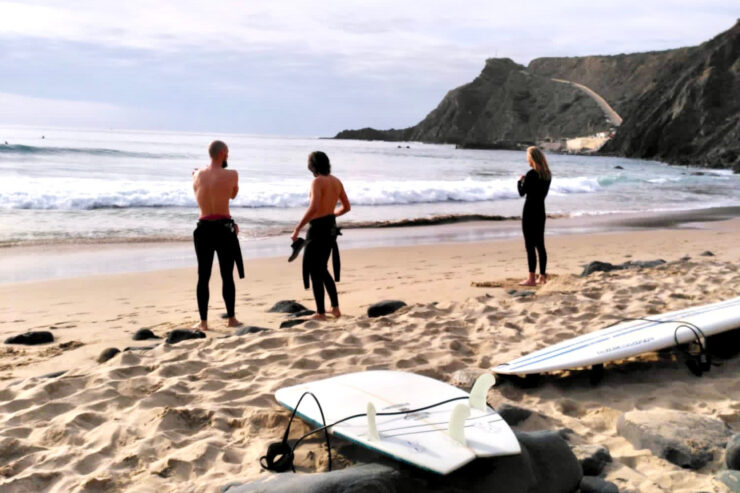
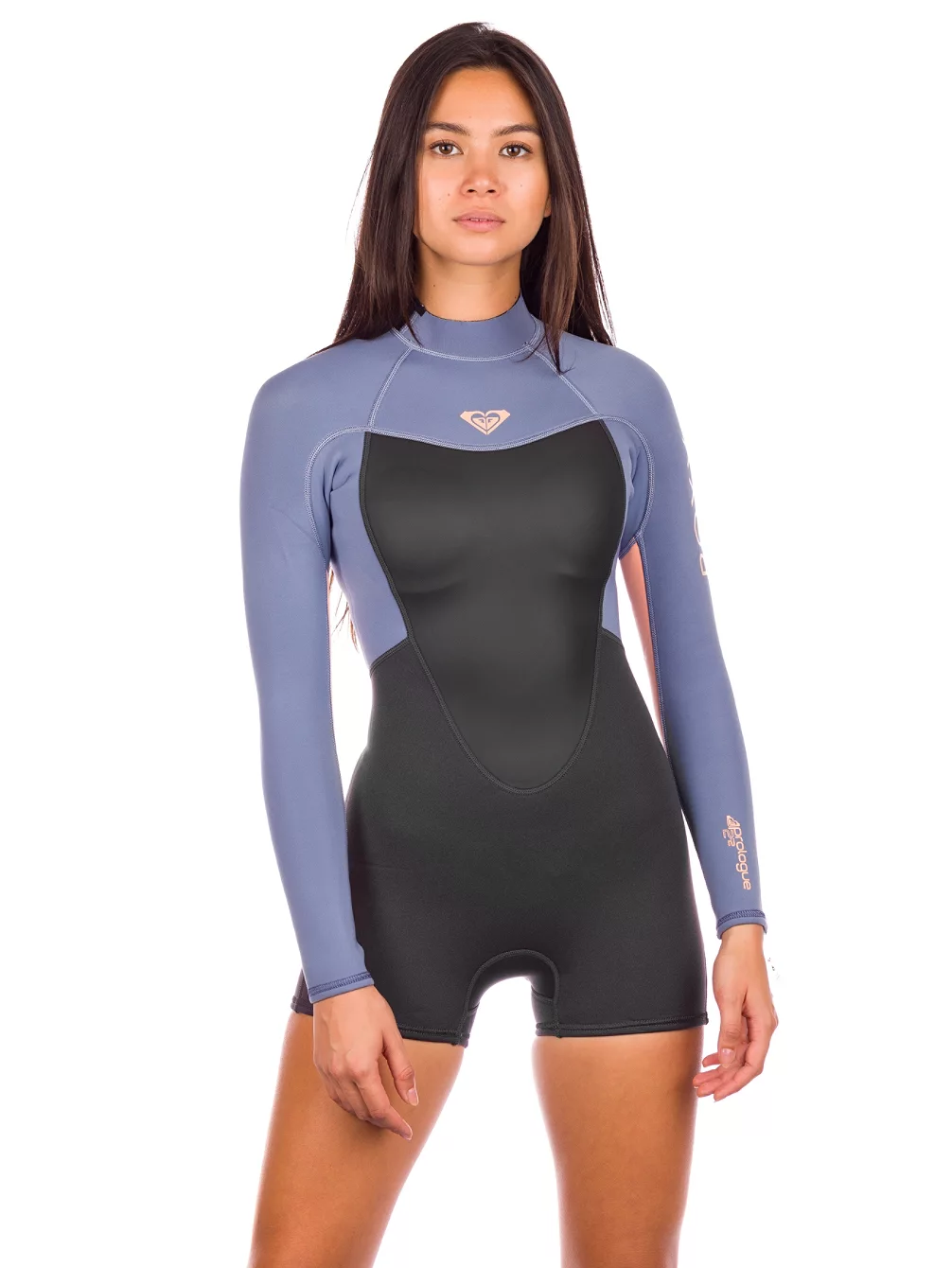
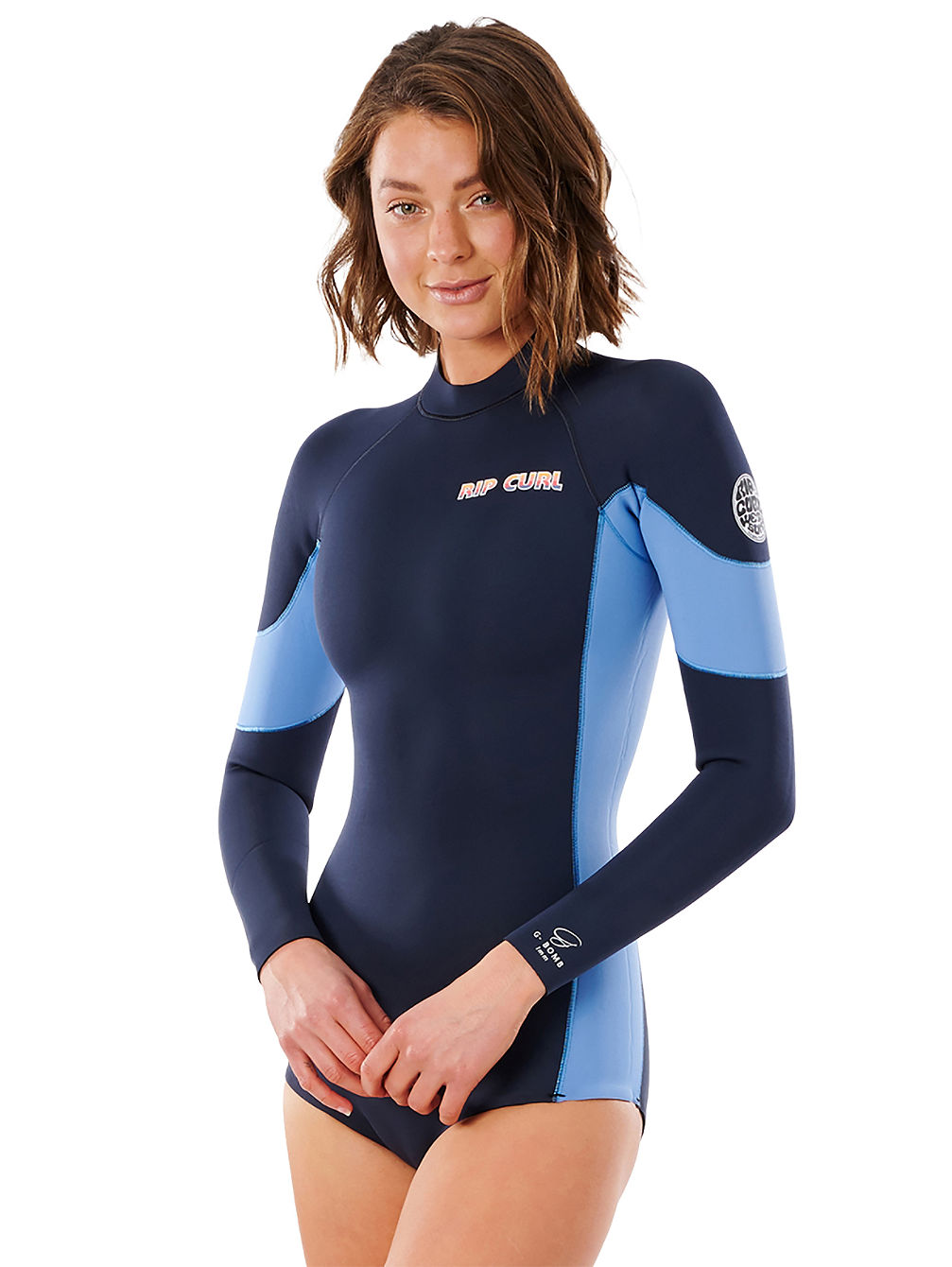
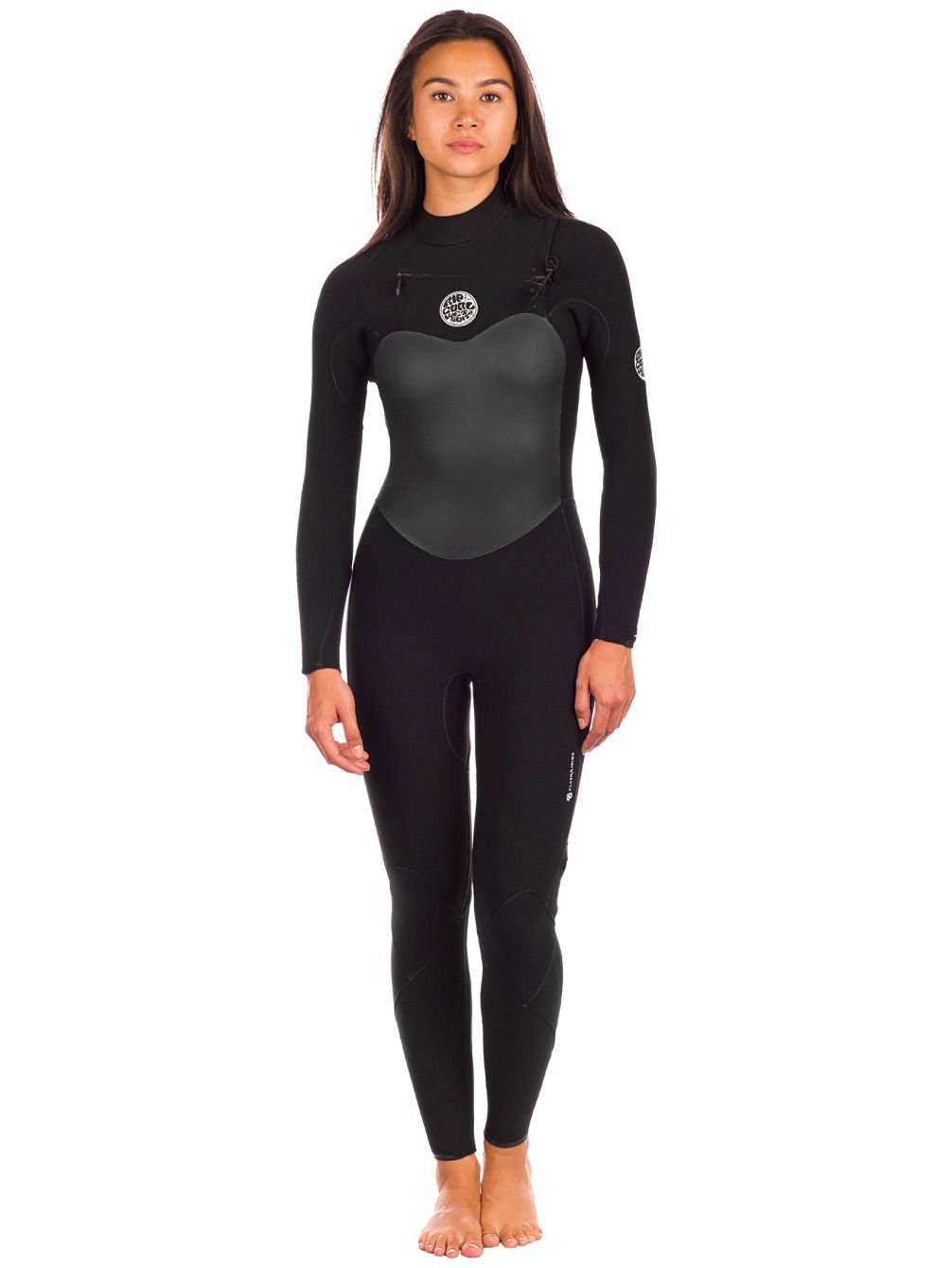
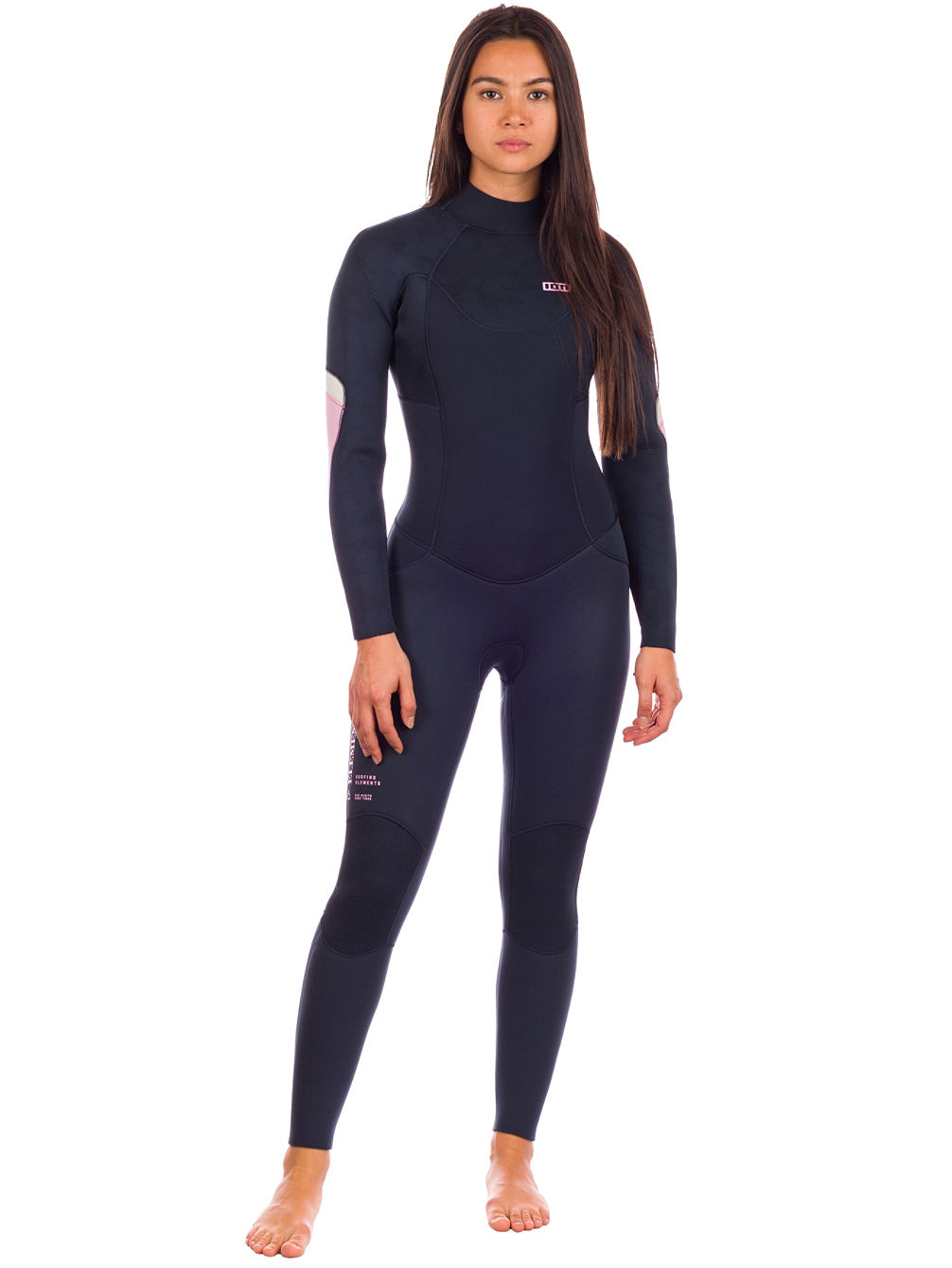
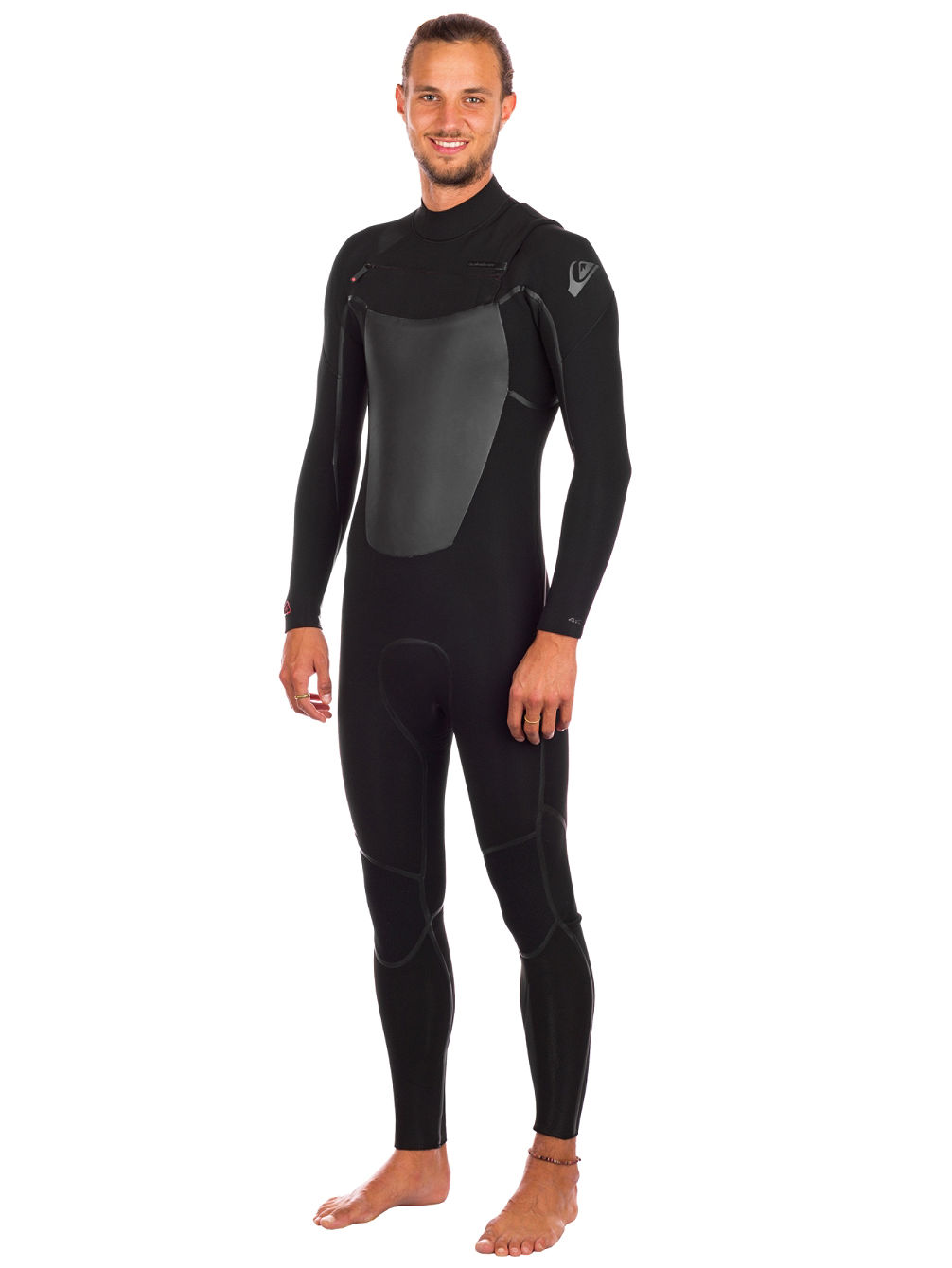


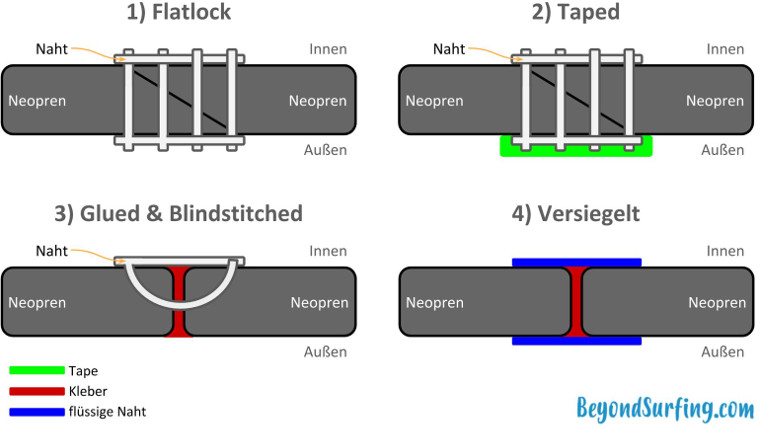
















Add comment